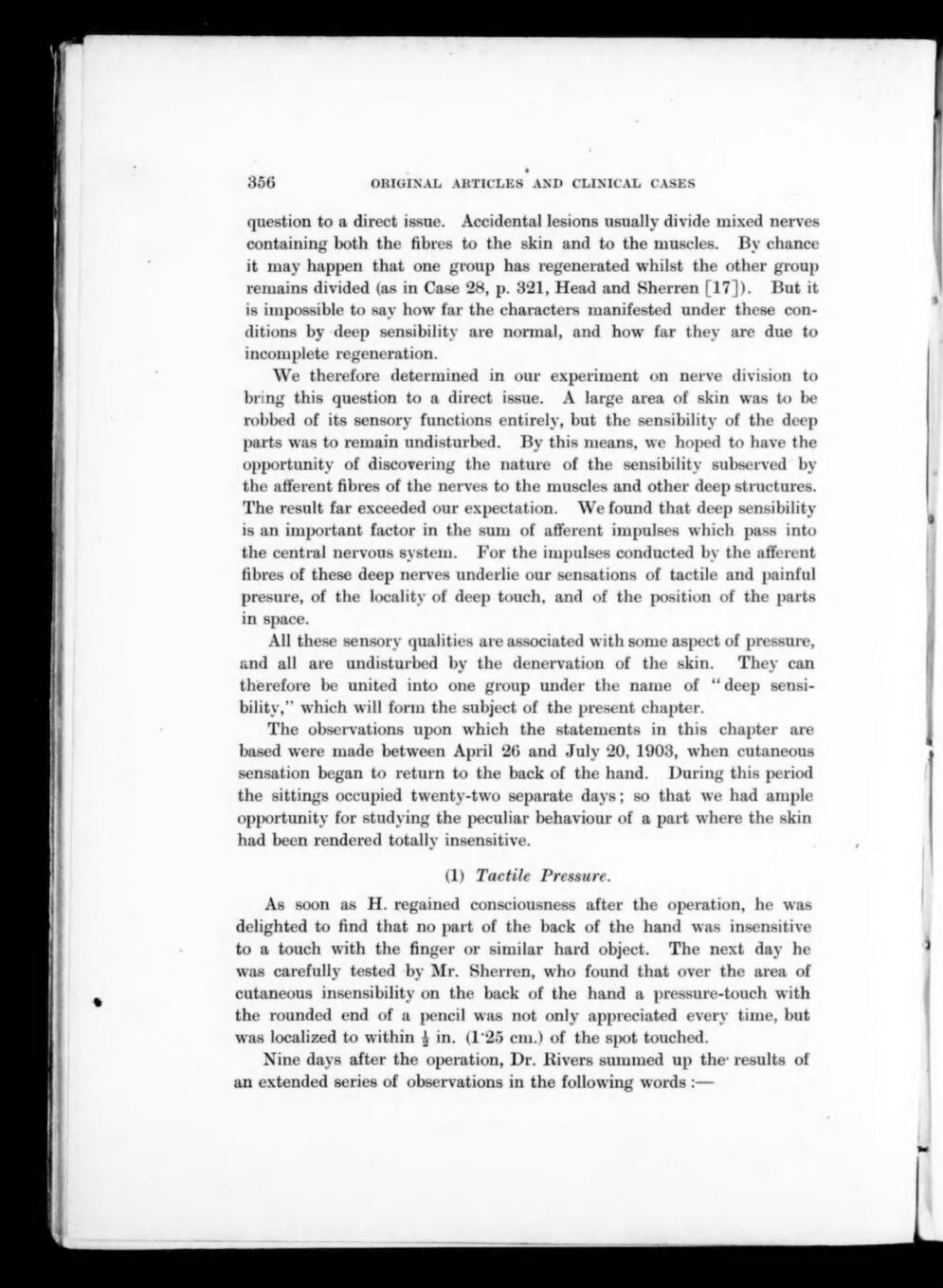question to a direct issue. Accidental lesions usually divide mixed nerves containing both the fibres to the skin and to the muscles. By chance it may happen that one group has regenerated whilst the other group remains divided (as in Case 28, p. 321, Head and Sherren [17]). But it is impossible to say how far the characters manifested under these conditions by deep sensibility are normal, and how far they are due to incomplete regeneration.
We therefore determined in our experiment on nerve division to bring this question to a direct issue. A large area of skin was to be robbed of its sensory functions entirely, but the sensibility of the deep parts was to remain undisturbed. By this means, we hoped to have the opportunity of discovering the nature of the sensibility subserved by the afferent fibres of the nerves to the muscles and other deep structures. The result far exceeded our expectation. We found that deep sensibility is an important factor in the sum of afferent impulses which pass into the central nervous system. For the impulses conducted by the afferent fibres of these deep nerves underlie our sensations of tactile and painful presure, of the locality of deep touch, and of the position of the parts in space.
All these sensory qualities are associated with some aspect of pressure, and all are undisturbed by the denervation of the skin. They can therefore be united into one group under the name of "deep sensibility," which will form the subject of the present chapter.
The observations upon which the statements in this chapter are based were made between April 26 and July 20, 1903, when cutaneous sensation began to return to the back of the hand. During this period the sittings occupied twenty-two separate days; so that we had ample opportunity for studying the peculiar behaviour of a part where the skin had been rendered totally insensitive.
(1) Tactile Pressure.
As soon as H. regained consciousness after the operation, he was delighted to find that no part of the back of the hand was insensitive to a touch with the finger or similar hard object. The next day he was carefully tested by Mr. Sherren, who found that over the area of cutaneous insensibility on the back of the hand a pressure-touch with the rounded end of a pencil was not only appreciated every time, but was localized to within ½ in. (1·25 cm.) of the spot touched.
Nine days after the operation, Dr. Rivers summed up the results of an extended series of observations in the following words:—
